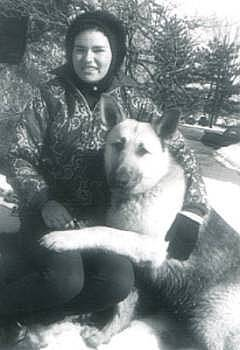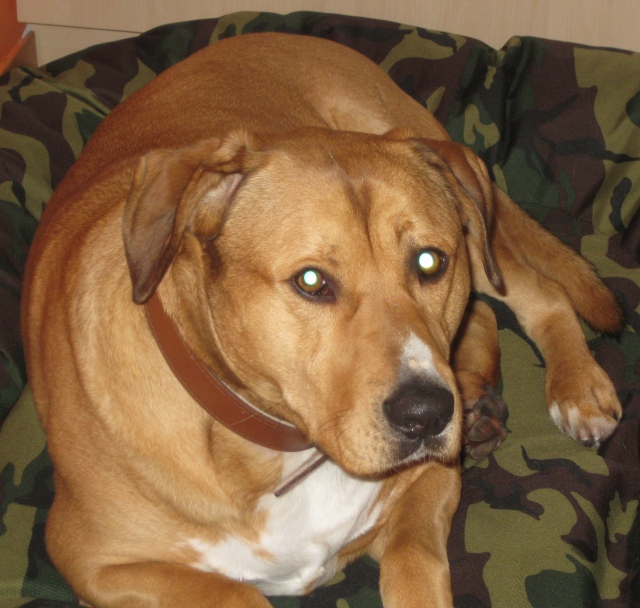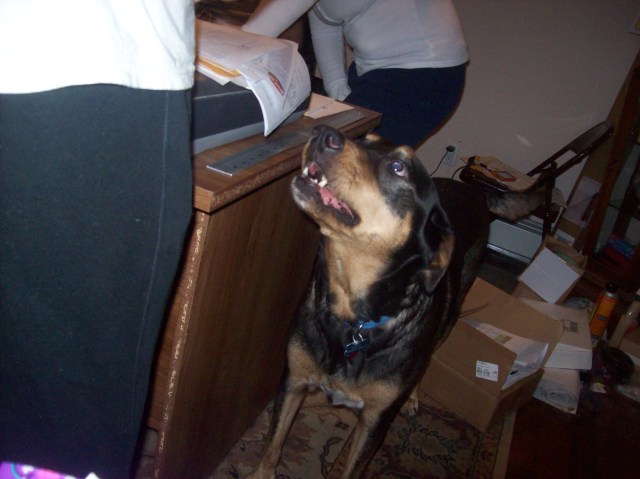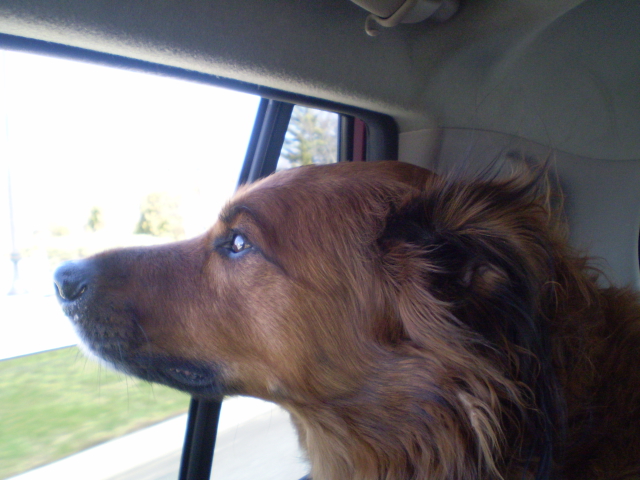QuestionHi. How will I know when it is time for my dog to have her puppies?
Answer
Hi Susan,
A dog's pregnancy lasts 63 days on average (sometimes a little less, sometimes a little longer), if you know the day that fertilization occurred you can at least estimate the day. Here is a free on line calculator you can use to estimate her due day:
http://www.gestationcalculator.com/other/dog-pregnancy-calculator
One week before your dog is due to whelp (have her litter) start taking her rectal temperature 2-3 times daily and record the readings to get an indication of HER unique trend in temperature. If you don't know how to take your dog's temperature, here are instructions:
http://www.ehow.com/video_2348681_take-dogs-temperature.html
The temperature of most pregnant dogs drop to a range between 100.0f(37.77c) and 100.9f (38.27c) the week before whelping. Some will tend to stay above 100.5f (38.05c) while others will dip to 99.7f (37.61c). Most pregnant dogs will drop at least a degree from their average prepartium temperature 12-36 hours before whelping. Usually a drop to 99.4f (37.44c) or lower is significant however, it is important to establish your dog's trend as some can go down this low without whelping. The more you know your dog, the better you can use temperature to predict whelping.
Any temperature above 102f (38.88c) the week prior to whelping in a pregnant dog that has been laying around (not up and excited about something) would be a cause for concern and may require a trip to your vet to evaluate. Occasionally, a dog will have a sudden dip in temperature well before the expected whelping date. If no other signs of whelping are present, don't panic, just monitor her.
In addition to monitoring temperature, there are several other signs that the puppies are on their way. For a few weeks before whelping, you will be noticing a clear mucus discharge. This will get fairly heavy a few days before whelping but should never be anything but clear, or slightly cloudy, mucus. Any other color or consistency is cause for concern. "Lumping up" will be noticed up to a week beforehand. This is where the abdomen periodically gets hard and "lumpy," not smooth and rounded as it normally is. (Think of a sack of large rocks-that is how a lumped up dog feels). The frequency and intensity of this "lumping up" increases as whelping approaches. The larger the litter, the more dramatic this can be. Once the hour of whelping arrives, the dog will seem "lumped up" almost continuously. Restlessness and digging at bedding are vague indicators and can occur up to a week before whelping. Intense panting and a distant look to the eyes usually do not occur more than 24 hours before whelping- and often start closer to whelping than that. Most pregnant dogs will refuse food 12-24 hours before whelping; they often have a little diarrhea and straining the day they are going to whelp. A pregnant dog that scarfs down her breakfast (and keeps it down) and has a normal bowel movement will probably not be whelping in the next 12 hours.
Some deliveries don't go as smoothly as others, and require a veterinarian's help. If your dog starts labor more than a week early or hasn't started within 69 days of conception, there may be a problem.
If your dog's temperature climbs higher than 102.8 degrees Fahrenheit (39.33 Celsius) in the days before or after delivery, you should take her to your veterinarian.
If more than 24 hours have passed since the onset of labor and she has not started delivering puppies, you should contact your vet.
If your dog takes more than 2 hours to expel one puppy or keeps on pushing a no puppy shows, call the vet.
Be prepared to help your dog clean her puppies, but don't intervene unless she doesn't do the work herself. As soon as the puppy is delivered, the mother dog should clean the puppy by licking it. If she doesn't, there is a problem and you must intervene quickly. Remove the amniotic membrane from the puppy's face and wipe fluids from the nose and mouth. Vigorously rub the puppy with clean, warm towels.
Record the time when each puppy is delivered. If more than four hours pass after the last puppy is born and you think there may be more puppies, you should contact a veterinarian immediately.
Record the number of placentas your dog delivers. If there are fewer placentas delivered than there are puppies, you should contact your veterinarian. If a placenta remains in the uterus, your dog will eventually become very sick.
Here is a website with instructions for whelping:
http://www.hilltopanimalhospital.com/whelping1.htm
Good luck!
Patti

 What is my dog
Question
This is the mystery do
a year ago a 11month ol
What is my dog
Question
This is the mystery do
a year ago a 11month ol
 What dog is right for me?
QuestionHi,
my name is Miriam and I am 12 years old.
What dog is right for me?
QuestionHi,
my name is Miriam and I am 12 years old.
 Strange dog behaviour ; organic brain syndrome in canine;
Question
Alfie
All of a sudden my 4 year old dog does n
Strange dog behaviour ; organic brain syndrome in canine;
Question
Alfie
All of a sudden my 4 year old dog does n
 old age dog
Question
he was barking!
I have a Dog who is a german s
old age dog
Question
he was barking!
I have a Dog who is a german s
 aggressive kids and dogs
QuestionI have a hyper aggressive 6 yr old who always p
aggressive kids and dogs
QuestionI have a hyper aggressive 6 yr old who always p